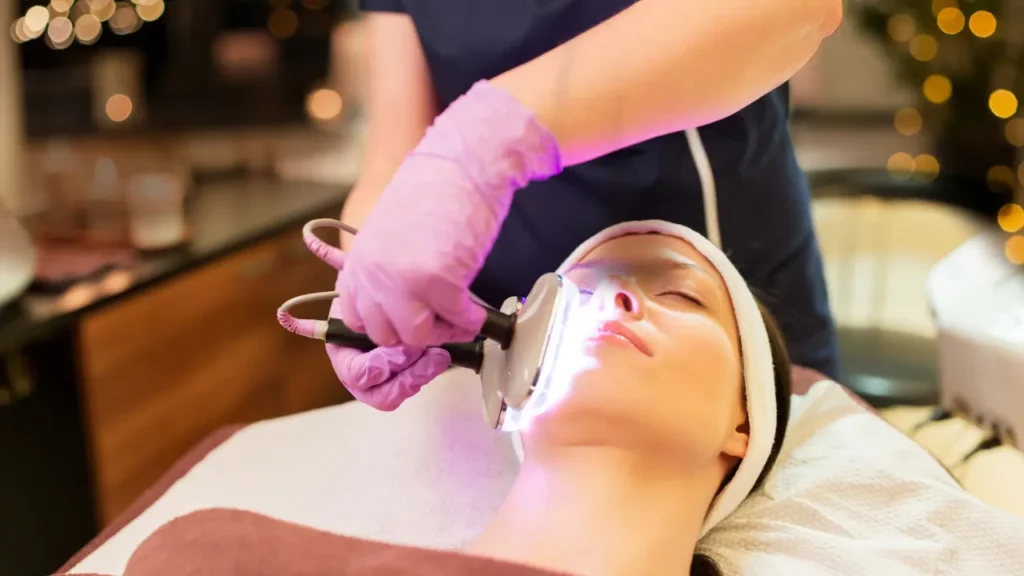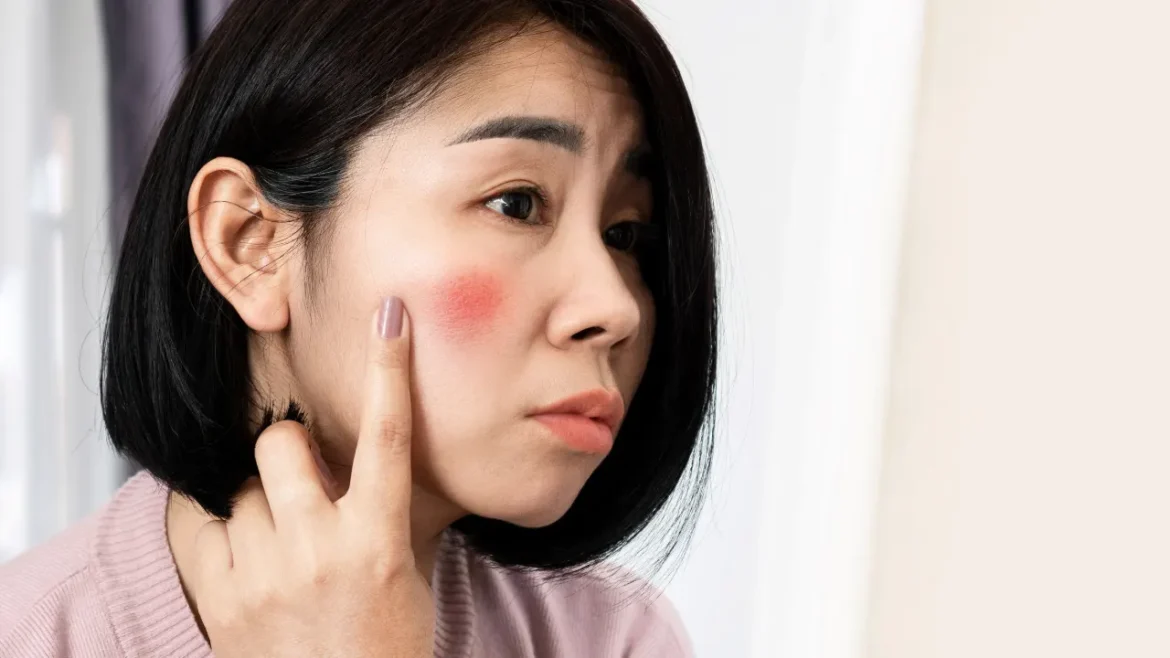Description
Young adults are most commonly affected by the skin condition Pityriasis Rosea (PR). The disease often starts as a single, ovoid form patch or herald patches on the trunk, which is subsequently accompanied by the symmetrical emergence of smaller, scaly, red, or pink lesions. The pathophysiology of PR is still in the research stage, as is its specific cause. Viral infections, immunological reactions, and genetic predisposition are only a few of the reported probable causes.
The characteristic rash of PR usually begins with a single, bigger lesion known as the “herald patch.” Usually round or oval in shape, this patch has clear borders and a salmon-colored interior. Smaller lesions, referred to as secondary patches, start to show appearing on the arms, trunk, and legs during a few weeks or days, forming a distinctive “Christmas tree” pattern. Before spontaneously disappearing, the rash can trigger minor itching or pain and may persist for some weeks to several months.
You May Also Like:
5 GREAT REASONS TO TRY APIGENIN FOR STRESS RELIEF
OLLY GOODBYE STRESS GUMMIES REVIEWED: A LEADING STRESS RELIEF PRODUCT
Pityriasis Rosea: Description, Causes, And Treatment Protocol is an original (HealthXWire) article.
Possible Causes
Pityriasis Rosea (PR) cause remains unknown. The growth of PR has, however, been linked to numerous potential causes and triggers. These comprise:
Immune Responses: Relevant experts propose that abnormal immune systems have a role in the emergence of PR. They theorize that antigens from viruses or additional factors provoke an immunological response, resulting in distinctive rash and related symptoms. People with PR have elevated levels of a few cytokines and immune activation indicators.
Viral Infections: Human herpesvirus 7 (HHV-7) and human herpesvirus 6 (HHV-6) are two viruses with a history of association with PR. Researchers have discovered viral DNA within the skin lesions in those with PR, pointing to a viral etiology. Because of this, they think that the first herald patch may signify primary viral infections, which are then followed by the emergence of secondary patches.
Environmental Factors: The emergence of PR may be influenced by environmental factors. It is frequently noted that particular seasons, including spring and fall, typically experience an increase in PR. Though the precise mechanisms are unclear, it is hypothesized that environmental factors like humidity, temperature, or allergens might influence the onset or course of PR.
Hormonal Factors: PR may be brought on by variations in hormone levels, according to some theories. Young adults seem to be more susceptible to PR, which is frequently linked to hormonal events like puberty, pregnancy, or the use of hormonal contraceptives. The precise hormonal processes influencing PR growth are not completely understood and need more research.
Genetic Predisposition: Specific human leukocyte antigen or HLA subtypes have been linked to an increased chance of having PR, which leads some studies to hypothesize that PR may be inherited. More study is required to clarify the genetic pathways because it is still unclear which specific genetic factors contribute to PR.
Exacerbating Factors and Mitigating Factors
Pityriasis Rosea is made worse by a number of circumstances, including:
Hot and Humid Conditions: The irritation and discomfort connected with PR can be made worse by extreme heat and humidity. Certain alleviation can be obtained by staying away from saunas, hot showers, and humid settings.
Stress: Pityriasis Rosea (PR) symptoms may become worse or last longer as a result of psychological stress. Using stress-reduction tactics, including relaxation exercises or stress-relieving activities, can help lessen symptoms.
Sweating: The itching and irritation of PR-affected skin might be made worse by excessive perspiration. It is best to avoid engaging in tasks that make you sweat a lot or to balance them out with cooling techniques and good hygiene.
Harsh Skincare Products: The use of certain skincare products, like abrasive detergents, soaps, or perfumed lotions, might irritate one’s skin and aggravate PR symptoms. The use of mild, fragrance-free, skin-friendly products is advised to you.
Friction and Irritation: Tight clothing or other abrasive materials may trigger friction and irritation, which will irritate the rash and make it worse. Wearing comfortable, breathable clothing that fits loosely can avoid irritability and friction.
The Pityriasis Rosea mitigating factors include:
Moisturizing the Skin: Dry skin can make the itching and discomfort linked to PR worse. After showering or as required, moisturizers may maintain the skin moisturized and ease symptoms.
Stress Management: Using stress-reduction strategies, like meditation, relaxation exercises, or engaging in activities that promote mental health, may help lower stress levels and perhaps lessen symptoms of PR.
Good Skin Hygiene: The management of PR requires maintaining excellent skin hygiene. The healing process is aided by routinely washing the affected regions with gentle, fragrance-free soaps.
Cool Compresses: The itching may be reduced and discomfort temporarily relieved by using cool compresses or having cool showers.
Calming Skincare Products: Itching and inflammation can be lessened by using skincare products with calming and soothing effects, including those made with components like aloe vera, chamomile, or oatmeal.
Avoiding Irritants: It is possible to stop future skin irritation and lessen the intensity of symptoms by avoiding proven irritants like dyes, perfumes, and harsh chemicals.

Standard Treatment Protocol
A self-limiting illness, Pityriasis Rosea (PR) frequently goes away on its own without any special care. The following treatments, nevertheless, may be taken into consideration in situations where indications are acute or chronic:
Symptomatic Relief: These include:
- Antihistamines
Individuals with PR may benefit from taking oral antihistamines to reduce itching and enhance sleep. Antihistamines that lack drowsiness are often chosen during the day.
- Topical Corticosteroids
PR-related inflammation, itching, and redness can be reduced using topical corticosteroid that is gentle to moderate ointments or creams. After receiving the advice of the healthcare expert, those affected must apply them carefully to the affected regions.
Phototherapy or Ultraviolet Light Therapy: UV light phototherapy is an option when symptoms are extreme or persistent. PR lesions can be treated with UVA1 phototherapy or narrowband UVB to lessen inflammation and expedite their healing.


Treatment Options
Prescription Medications: In some cases, prescription treatments like antiviral drugs, oral corticosteroids, and immunomodulatory substances may be used. When there is intense itching or broad involvement, corticosteroids may be administered. When herpesvirus infections are considered or identified as active, antiviral drugs may occasionally be employed. For instances with unusual or protracted courses, immunomodulatory drugs like azithromycin or oral erythromycin might be recommended.
Over-the-Counter Formulations: Topical antihistamines or calamine lotion are examples of over-the-counter (OTC) products that can relieve the itching and discomfort related to PR temporarily. Until the rash clears up on its own, these OTC treatments can help relieve symptoms when taken as advised.
Moisturizers: The dryness and itching brought on by PR can be reduced by applying moisturizers, like fragrance-free lotions or creams. The skin’s protective function is restored and maintained with the use of moisturizers, which lessens symptoms and accelerates recovery.
Natural Supplements: Although there is little scientific proof that supplements can effectively treat Pityriasis Rosea (PR), certain nutrients and supplements might possess potential advantages in promoting the immune system and general skin health. Before beginning any supplements, it is essential that you speak with a medical expert because they could combine with other prescriptions or be dangerous depending on your health.
The subsequent supplements have been recommended as supplemental treatments for PR:
- Vitamin D
Vitamin D is crucial for immune system function besides possessing anti-inflammatory properties. Based on certain studies, low vitamin D levels and the onset or severity of PR might be connected. Supplementing with vitamin D may reduce inflammation while enhancing immune system performance.
- Omega-3 Fatty Acids
The anti-inflammatory qualities of omega-3 fatty acids, which are often found in flaxseed oil or fish oil, may improve the health of the skin. They can assist in controlling immunological reactions and lowering inflammatory levels within the body.
Natural and Herbal Remedies: These include:
- Aloe Vera
Known for its calming and anti-inflammatory effects, aloe vera gel. Itching, inflammation, and redness, linked to PR may be reduced by rubbing natural aloe vera gel on the affected regions.
- Chamomile
The skin responds to chamomile’s soothing and anti-inflammatory properties. To calm irritated skin in PR, treatments like chamomile tea may be applied topically in the form of a compress or mixed into bathwater.
- Tea Tree Oil
Antibacterial and anti-inflammatory effects can be found in tea tree oil. To assist lessen itching and inflammation, dilute tea tree oil might be administered topically on the affected regions.
- Oatmeal Baths
Colloidal oatmeal, which is finely powdered oats, can be used in bathwater to provide a relaxing bath for PR. Oatmeal possesses anti-inflammatory effects and creates a barrier of protection on the skin, which lessens itchiness and irritation.
However, it is important that you keep in mind that different people may respond differently to natural and herbal therapies and that their effectiveness may vary. Although these treatments may alleviate symptoms, they are neither a proven cure for PR nor a replacement for medical care. Before introducing certain natural supplements or treatments into the PR therapy regimen, it is advisable to speak with a healthcare provider.


Conclusion:
Skin disorders are difficult to experience. Human beings at various ages are vulnerable to different types of skin disorders. Pityriasis Rosea is a skin disorder that is most likely to be prone for young adults. The precise, singular cause of this disorder remains unknown; however, rigorous research into this area has been and continues to be underway. What is known thus far is that a variety of factors contribute to its presence and spread, including skin care products, hygiene products, environmental factors, and genetics. This article provided context, background, and strategies for treatment. Please consult with healthcare professionals who are aware of your pre-existing conditions before executing a treatment plan.


Additional resources for further reference:
- “Pityriasis rosea.” Retrieved from: https://www.mayoclinic.org/diseases-conditions/pityriasis-rosea/symptoms-causes/syc-20376405
- “PITYRIASIS ROSEA: DIAGNOSIS AND TREATMENT.” Retrieved from: https://www.aad.org/public/diseases/a-z/pityriasis-rosea-treatment
- “PITYRIASIS ROSEA.” Retrieved from: https://www.aocd.org/page/PityriasisRosea
- “Pityriasis Rosea: Symptoms, Causes, and Treatment.” Retrieved from: https://www.webmd.com/skin-problems-and-treatments/whats-pityriasis-rosea
Important Note: The information contained in this article is for general informational purposes only, and should not be construed as health or medical advice, nor is it intended to diagnose, prevent, treat, or cure any disease or health condition. Before embarking on any diet, fitness regimen, or program of nutritional supplementation, it is advisable to consult your healthcare professional in order to determine its safety and probable efficacy in terms of your individual state of health.
Regarding Nutritional Supplements Or Other Non-Prescription Health Products: If any nutritional supplements or other non-prescription health products are mentioned in the foregoing article, any claims or statements made about them have not been evaluated by the U.S. Food and Drug Administration, and such nutritional supplements or other health products are not intended to diagnose, treat, cure, or prevent any disease.
Table of Contents


